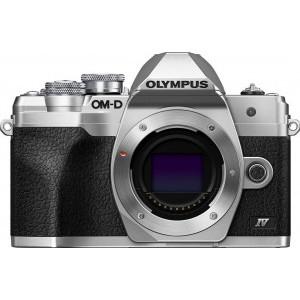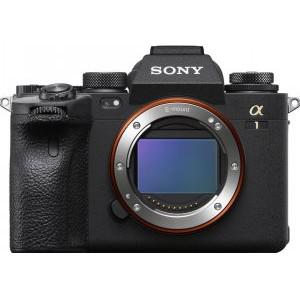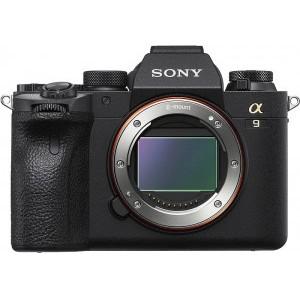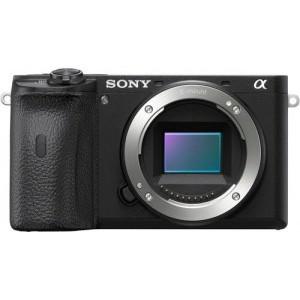


| Announced: | 04 Aug 2020 |
|---|---|
| Sensor Resolution: | 20Mp |
| Sensor Type: | 4/3 CMOS |
| ISO: | 200-25600 |
| Weight: | 383g |
| Physical Dimensions: | 122 x 84 x 49 mm |
| Viewfinder: | Electronic |
| Screen Type: | 3" Tilting |
| Video Resolutions: | 3840 x 2160 |

44

42

47

62

64
This post contains affiliate links and I will be compensated if you make a purchase after clicking through my links. As an Amazon Associate I earn from qualifying purchases.
 pros
pros cons
consThe new Olympus OM-D E-M10 Mark IV continues the lucky tradition of the "Micro Four Thirds", a technology - born in 2008 from the collaboration between Olympus and Panasonic - which eliminates the space for the reflex mirror and the pentaprism, facilitating smaller machines bodies.
Reviewed by the reference site Digital Camera World with the highest score, the Olympus OM-D E-M10 Mark IV is destined to become an entry level mirrorless in that market segment intended for those who want to switch from the photographic performance of a smartphone to something more consistent.
Inviting compromise between low budget and usability, the Mark IV is an upgraded version of the Mark III, launched in 2017. This machine was built around the 20 MPixel MQT Live MOS sensor and TruePic VIII processor. The Olympus OM-D E-M10 Mark IV has all the numbers to be one of the most loved models by video bloggers, thanks to a "flippable" (also downwards) screen, for creative shots that will delight selfie lovers .
One could define that of the Olympus OM-D E-M10 Mark IV: a classic design, referring to the analog cameras of the seventies, based on the light / dark contrast of the black elements with silver ones (but there is also a completely Black version of the Mark IV)
The polycarbonate camera body of the Olympus OM-D E-M10 Mark IV is compact and light, even more than the Mark III from which it "lost" 27 grams: 383 grams (battery and memory card included) with the measures 122 x 84 x 49mm. The appearance of the E-M10 Mark IV is practically identical to the previous model, same vintage physiognomy, and ergonomics.
The Olympus OM-D E-M10 Mark IV is not tropicalized - as every other entry level machine - and is a bit disappointing due to its construction in plastic materials, you perceive this "cheap" feeling only by grasping it , but it’s still visually a beautiful object. This, a malus, rarely found in other machines of the same price.
The upper right of the Olympus OM-D E-M10 Mark IV is the most crowded section of the camera, with three dials: one for shooting modes (manual, aperture/shutter priority, auto, video), the others for compensation and for aperture and shutter speed. Ergonomically well arranged, the rings can be reached without problems and have the right resistance to touch to prevent them from being rotated by a casual gesture.
The rear of the Olympus OM-D E-M10 Mark IV features the EVF Viewfinder - the classic Menu, Info, Trash can and Play buttons - and a selector to access flash, burst and ISO settings. Obviously in the back the protagonist is the 3-inch touch display (1,037K points) now also rotatable downwards.
Processor: TruePic VIII
Sensor: 4/3 '' 20.3 Megapixel Live MOS sensor
Focus points : 121 contrast points AF
ISO sensitivity: 200-25,600 (the minimum value can be raised up to 100);
Built-in flash: Yes
Microphone input : no
Memory: one UHS-II SD card slot
Video recording: 4K at 30, 25, 24 fps (1080p up to 60 fps)
Connectivity: Wi-Fi and Bluetooth
HDMI: Micro D-type connector
USB charging: Yes, when the camera is off;
Battery: Li-Ion (Olympus BLS-50, capacity 8.50 Wh)
Weight: 383 grams with battery and memory card.
One of the most anticipated technical specifications of the Olympus OM-D E-M10 Mark IV is the improved AutoFocus system, compared to the Mark III, especially in capturing moving subjects in medium/long distances from the lens. On the other hand, some problems occur in the closest subjects, at less than a meter, a distance that is not common. The 15fps burst works well, it’s responsive, and useful in situations with fast moving scenes, it can give satisfaction in nature photography when it is ideal in the silent setting (even in this scenario it does not give problems).
A Micro Four Thirds sensor is not comparable to the Full Frame format, yet... in portraiture the Olympus OM-D E-M10 Mark IV delivers very high quality images, with a responsive AF Eye, that can detect the subjects' eyes without any issue.
With a renewed sensor and a move to 20 megapixels, the Olympus OM-D E-M10 Mark IV has an acquisition of details (in the lower ISO) very close to that of the Fujifilm X-T200 which has a 24 MP sensor. Obviously, while the ISO goes up, image cleanliness goes down even though the Olympus O-MDs have always been strong in the dynamic range and the new E-M10 IV confirms this tradition. But if the Mark III scores slightly better with lower sensitivities, when it reaches 6400 ISO and beyond, the new Mark IV performs better. And in principle it should be remembered that Olympus cameras can capture a higher dynamic range than the rivals Fujifilm and Sony's APS-C.
Compared to the Mark III, one would have expected an increase in digital noise - because as the sensor increases, the sizes of the pixels, less sensitive to light, decreases - and instead with the Olympus OM-D E-M10 Mark IV this cliché is avoided , since digital noise seems the same, more than acceptable, of the Mark III. And speaking of digital noise it must be said that, for example, that the Sony a6100 does not do so well, releasing more "noisy" photographs at higher ISOs.
The video recordings of the Olympus OM-D E-M10 Mark IV (UltraHD 30fps) are supported by a five-axis image stabilization which makes the clips smoother and less jittery, very useful especially when on the move, on foot or on any means. The rotatable monitor, in addition, facilitates vlog-style movies, or any shooting outside the conventional canons.
The macro differences between the latest Olympus in Micro Four Thirds and the two previous models of the same line concern the 20MP sensor (instead of 16), a renewed AF and the downward rotation of the LCD screen. On Amazon, the Mark IV is on sale (with basic 14-42mm F3.5-5.6 EZ lens) for 550 pound ; much cheaper is the Mark III - with two optics (14-42mm and 40-150mm); and the Mark II with 14-42 mm lens, is the cheapest of the three models but has the limit of 2K video.
Compared to its two older “sisters” the Olympus OM-D E-M10 Mark IV is better for sports or wildlife photography, given the improved continuous AF. In addition, the Face Priority / Eye Priority AF function can certainly be useful in photos with family or friends, even if for landscapes and street photography the Mark III remains a more than decent camera.
The main criticism of the Olympus OM-D E-M10 Mark IV? Certainly, the absence of a microphone input, a gap that diminishes (even if only in part) the social DNA of this Olympus OM-D E-M10 Mark IV that is equipped with a "flip" screen. It would have been a nice combination to have a flip-up panel for selfies and the microphone entry but... let's not forget that we are talking about an entry level (and consequently, it also lacks a headphone jack):
Despite this lack, the performance of this Olympus has fully convinced us: this Micro Four Thirds is currently one of the top choices for the fateful "leap" of quality from a smartphone. The bulk and weight are some of the best around, making this camera ideal for travel photography.
| Review | compare Olympus OM-D E-M10 IV with | overall score |  Portrait Portrait |
 Landscape Landscape |
 Sport Sport |
 Street Street |
 Everyday Everyday |
|
 |
OlympusOM-D E-M10 IV | 54 | 44 | 42 | 47 | 62 | 64 | buy on |
|---|---|---|---|---|---|---|---|---|
 |
SonyAlpha a1 | 75 | 70 | 70 | 75 | 74 | 76 | buy on |
 |
SonyAlpha A9 II | 73 | 67 | 67 | 74 | 74 | 76 | buy on |
 |
SonyAlpha A7c | 72 | 65 | 66 | 69 | 75 | 76 | buy on |
 |
SonyAlpha A7 IV | 70 | 67 | 67 | 70 | 71 | 72 | buy on |
 |
SonyAlpha a6600 | 65 | 51 | 50 | 67 | 72 | 74 | buy on |
 |
PanasonicLumix DC-GH6 | 62 | 47 | 46 | 70 | 64 | 67 | buy on |
The Olympus OM-D E-M10 IV is a mirrorless camera launched on 04/08/2020.
Technically speaking, the Olympus OM-D E-M10 IV ranks in the average of its category, scoring 54 overall. The Olympus OM-D E-M10 IV weights 383 gr and spans 122 x 84 x 49 mm. This means that it is particularly light and small, indeed one of the most handy options within its category.
Going into details, the Olympus OM-D E-M10 IV behaves better than average in its category for:
On the contrary, the performance of Olympus OM-D E-M10 IV is below the category average in:
However, the technical performance of your camera should be put in context. Indeed, depending on the type of photography you are interested in, each individual camera feature can impact your pictures to a different extent. This is the reason why we developed the iCamRank. iCamRank has been designed to weight all the individual technical specifications of each camera in the camerarace database, depending on different shooting conditions. Thus, here is what we suggest, depending on the photography type you like most:
Sensor Type
CMOS
Sensor Size
4/3
Sensor Dimensions
17.4 x 13.0 mm
Sensor Area
226.2 mm2
Sensor Resolution
20 Mp
Max Image Resolution
5184 x 3888
Max Native ISO
25600
Min Native ISO
200
RAW Support

Manual Focus

Lens Mount
Micro Four Thirds
Number of Lenses
107
Focal Length Multiplier
2
Screen Type
Tilting
Screen Size
3.0"
Screen Resolution
1040Kdot
Live View

Touch Screen

Viewfinder
Electronic
Viewfinder Resolution
2360000.0
Viewfinder Coverage
100
Viewfinder Magnification
0.62x
Min Shutter Speed
60s
Max Shutter Speed
-
Continuous Shooting
9fps
Shutter Priority

Aperture Priority

Manual Exposure Mode

Exposure Compensation

Custom White Balance

Image Stabilization

Built-in Flash

Flash Range
7.2
Max Flash Sync
1/250s
Flash Modes
Redeye fill-in off redeye slow-sync (1st-curtain) slow sync (1st-curtain) slow sync (2nd-curtain) manual
External Flash

AE Bracketing

WB Bracketing

DxO Overall Score
DxO Color Depth
DxO Dynamic Range
DxO Low Light ISO
Multi-Segment

Average

Spot

Partial

AF-Area

Center Weighted

AF Touch

AF Continuous

AF Single

AF Tracking

AF Selective

AF Center

AF MultiArea

AF Live View

AF Face Detection

AF Contrast Detection

AF Phase Detection

Number of Focus Points
121
Number of Cross Focus Points
0
Video Resolutions
3840 x 2160 @ 30p / 102 Mbps MOV H.264 Linear PCM3840 x 2160 @ 25p / 102 Mbps MOV H.264 Linear PCM3840 x 2160 @ 24p / 102 Mbps MOV H.264 Linear PCM1920 x 1080 @ 60p / 52 Mbps MOV H.264 Linear PCM1920 x 1080 @ 50p / 52 Mbps MOV H.264 Linear PCM1920 x 1080 @ 30p / 52 Mbps MOV H.264 Linear PCM1920 x 1080 @ 25p / 52 Mbps MOV H.264 Linear PCM1920 x 1080 @ 24p / 52 Mbps MOV H.264 Linear PCM
Max Video Resolution
3840x2160
Video Formats
MPEG-4 H.264
Microphone Port

Headphone Port

Wireless Connectivity
Built-in
HDMI

USB
BLS-50 lithium-ion battery & USB charger
Environmental Sealing

Water Proof

Dust Proof

Shock Proof

Crush Proof

Freeze Proof

Weight
383g
Physical Dimensions
122 x 84 x 49 mm
Battery Life
360
Battery Type
Built-in
Battery Model
BLS-50
Self Timer
Yes (2 or 12 sec, custom)
Timelapse Recording

GPS

Storage Type
SD SDHC SDXC (UHS-II supported)
Storage Slots
1
Copyright 2024
EMA s.r.l.s. | p.i. 11740890014